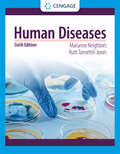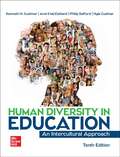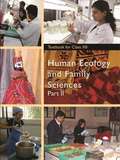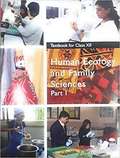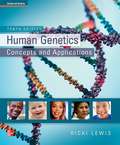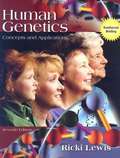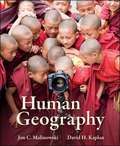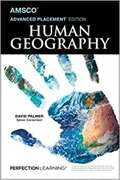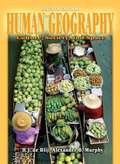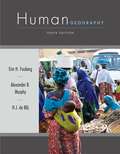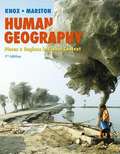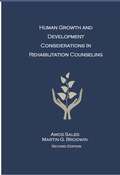- Table View
- List View
Human Diseases (Mindtap Course List)
by Marianne Neighbors Ruth Tannehill-JonesDesigned specifically for allied health students, HUMAN DISEASES, Sixth Edition, delivers comprehensive coverage packed with the latest research and developments from real-world practice. Extremely reader friendly, this best-selling pathophysiology text begins with a basic review of anatomy and physiology, then explores the diseases and disorders health care professionals see and treat most often. <P><P>Intuitively organized chapters present each disease's description, etiology, symptoms, diagnosis, treatment and prevention, while detailed, full-color photos help readers gain a thorough understanding of key concepts. Completely up to date, the Sixth Edition includes information on new and emerging disorders, ICD-10 progress, pharmacology concerns, herbal and nontraditional remedies, current statistics and more. Its thought-provoking vignettes, real-life cases and interactive learning tools make pathology more accessible than ever for today's learners.
Human Diseases: A Systemic Approach
by Mark Zelman Mary Lou Mulvihill Elaine Tompary Jill Raymond Paul HoldawayThis book presents the basic principles of human disease, organized by human organ system. It provides practical information for both health career and non-professional readers—unlike other books, which are generally too high level or specialized for this purpose. <P><P> New to this edition are: new diagnostic tests and lab procedures; enhanced coverage in treatment and diagnostic sections in disorders to include common treatments and general pharm options; increased coverage of disease statistics, prevalencies, risk factors for diseases and conditions; addition of prevention and aging to Diseases at a Glance table at the end of each chapter; A new page will be added at the end of each chapter which walks the readers through the multimedia resources that are available for each chapter; and much more!
Human Diversity in Education: An Intercultural Approach
by Kenneth Cushner Averil McClelland Philip L. Safford Hyla CushnerThis new edition of Human Diversity in Education provides coverage of current events and relevant legislation is incorporated throughout the book to ensure students are educated on the most critical issues teachers are faced with in today's classroom. <p><p>It prepares new teachers for the certainty of change as well as the challenge of new thinking that is required for young people to take their place as responsible, reflective, and active citizens in an increasingly interdependent society. <p><p>Case Studies in each chapter present students with situations they may encounter in the workplace, and accompanying questions ask them to determine how they would react when faced with the same situation.
Human Ecology And Family Sciences Part-2 class 11 - NCERT - 23
by National Council of Educational Research and Training"Human Ecology and Family Sciences Part-2" for Class 11 by NCERT covers a broad range of topics. It begins with an "Introduction" followed by a focus on "Understanding the Self," where personal development and self-awareness are emphasized. The book then delves into "Food, Nutrition, Health and Fitness," exploring the basics of nutrition and its impact on human well-being. "Management of Resources" discusses how resources like time, money, and materials can be efficiently utilized. "Fabrics Around Us" investigates different types of fabrics and their uses. "Media and Communication Technology" addresses the role of media and technology in modern life. Lastly, "Concerns and Needs in Diverse Contexts" explores the various needs and issues that arise in different societal and cultural settings. Overall, the book aims to provide a holistic understanding of human ecology and family sciences, equipping students with the knowledge and skills needed to navigate their personal lives and larger societal structures.
Human Ecology and Family Sciences Part 1 class 11 - NCERT
by National Council of Educational Research and TrainingPublished by the NCERT, this textbook of Human Ecology and Family Sciences will be of immense help for the students of Class 11. It gives the students a better understanding of the adolescence and also the biological, physical, socio-cultural and emotional changes that one undergoes. Students also get to know about the importance of a family, a community and a society. Written in a simple, easy to understand format, this book covers all the topics that have been prescribed by the Central Board of Secondary Education (CBSE).
Human Ecology and Family Sciences Part-1 class 11 - NCERT - 23
by National Council Of Educational Research and TrainingThe NCERT Class 11 book on "Human Ecology and Family Sciences - Part 1" provides a comprehensive introduction to the interdisciplinary field of home science. The book is designed to give students an understanding of how individual, family, and community well-being is influenced by various factors such as environment, health, resources, and societal structures. It covers a range of topics including human development, family dynamics, resource management, and consumer education.
Human Genetics: Concepts and Applications
by Ricki LewisAn excellent introductory text for undergraduates, especially those with "sciencephobia. " Slow-paced material incorporates information on genetics in the news, and features chapter outlines, real-life vignettes, technology timelines, key concepts, chapter glossaries, and review and applied questions, plus boxed readings on fun subjects like human werewolves, and color photos and diagrams. Includes sections on fundamentals, transmission genetics, DNA and chromosomes, population genetics, immunity and cancer, and the latest genetic technology. Annotation c. by Book News, Inc. , Portland, Or.
Human Genetics: Concepts and Applications (6th edition)
by Ricki LewisAn excellent introductory text for undergraduates, especially those with "sciencephobia." Slow-paced material incorporates information on genetics in the news, and features chapter outlines, real-life vignettes, technology timelines, key concepts, chapter glossaries, and review and applied questions, plus boxed readings on fun subjects like human werewolves, and color photos and diagrams. Includes sections on fundamentals, transmission genetics, DNA and chromosomes, population genetics, immunity and cancer, and the latest genetic technology. Annotation c. by Book News, Inc., Portland, Or.
Human Genetics: Concepts and Applications (7th edition)
by Ricki LewisAn excellent introductory text for undergraduates, especially those with "sciencephobia." Slow-paced material incorporates information on genetics in the news, and features chapter outlines, real-life vignettes, technology timelines, key concepts, chapter glossaries, and review and applied questions, plus boxed readings on fun subjects like human werewolves, and color photos and diagrams. Includes sections on fundamentals, transmission genetics, DNA and chromosomes, population genetics, immunity and cancer, and the latest genetic technology. Annotation c. by Book News, Inc., Portland, Or.
Human Genetics: Concepts and Applications (Ninth Edition)
by Ricki LewisHuman Genetics: Concepts and Applications, ninth edition, is a non-science major's human genetics text that clearly explains what genes are, how they function, how they interact with the environment, and how our understanding of genetics has changed since completion of the human genome project. Meticulously updated, focused on concepts, and rich with personal stories from people whose lives are dramatically affected by the principles being discussed,Human Genetics is a textbook that will prepare the next generation of citizens for the decisions that lie ahead.
Human Geography
by David Kaplan Jon Malinowski David H. KaplanGeographers believe that phenomena on the earth’s surface are not random, but rather the result of a complex series of processes going on at the local, regional, national and international scale. Human Geography, 1e by Jon Malinowksi and David Kaplan, will introduce you to how geographers attempt to make sense of the diverse reality of human populations on the Earth’s surface. Human Geography, 1e uses a modular approach. Each of the 18 chapters are divided into page “spreads” to easily allow an instructor the flexibility to customize his or her course.
Human Geography in Action
by Michael Kuby Patricia Gober John HarnerThe new fifth edition enhances coverage in the field by enabling economists and political geographers to work online with GIS maps, spreadsheets, simulations, and animated graphs. The book has been updated to use maps of traditional foods and vernacular phrases for soft drinks to illustrate culture regions. Expanded discussions of migration include a look at international immigration. New material is also presented on the local food movement and the breakdown in negotiations for agricultural trade agreements at the Doha trade summit. In addition, economists and political geographers will find key terms throughout the chapters such as creative class, outsourcing, substitution of capital for labor, and transit-oriented development.
Human Geography: A Short Introduction
by John Rennie ShortHuman Geography: A Short Introduction gives students a sense of the complex human geography of the contemporary world with a concise, focused format in an accessible, engaging style. The book is a foundation for college courses in human geography. Using detailed case studies to enliven broader arguments and comprehensive scholarship, Human Geography is the ideal choice for instructors who want the flexibility of a short primer without compromising on scholarly excellence. It is specifically designed to be augmented by the instructors. It provides a fresh update to Human Geography in a new and exciting manner. Features* Detailed and engaging case studies bring the book's broader arguments to life* Every chapter includes a list of further readings and websites for instructors and students* Priced at less than one third the cost of the best-selling books in the field, yet supported by strong graphics and supplements programs, this book represents unparalleled flexibility and value for both students and professors.
Human Geography: A Spatial Perspective
by Sarah Bednarz Mark Bockenhauer Fred HiebertNIMAC-sourced textbook
Human Geography: Culture, Society, and Space
by H. J. de Blij Alexander B. MurphyAuthoritatively written by a geographer who has worked on every continent, Human Geography is sensitive to people of other cultures and from all walks of life. * Focuses on key geographic concepts and puts them in practical and current perspective. *
Human Geography: People, Place, and Culture (10th edition)
by H. J. de Blij Erin H. Fouberg Alexander B. MurphyHuman Geography 10th Edition includes all of the important concepts and theory on Human Geography as previous issues with a more succinct and engaging narrative while going in depth to touch on all the major themes of the topic. The text focuses on identity and how every human being forges an identity in a globalized world. It includes recurring coverage of "identity" and how people make places and shape identities to see global, local and individual implications of decisions that people make every day. The main objective of this issue is to provide more understanding of human systems from a spatial perspective; ways to think globally; and ways to understand real-world implications of Human Geography. The text will help encourage a better understanding of how to create an identity in a globalized world and how decisions happen in a global context and can have global impacts.
Human Geography: People, Place, and Culture (8th edition)
by Harm J. de Blij Erin H. Fouberg Alexander B. MurphyHuman Geography: Culture, Society and Space challenges students to think geographically across scale and across a wide range of geographical phenomena and global issues. The authors engage the students throughout the text by posing geographical questions that encourage students to think critically about their own locality, region, nation, and world. In the Eighth Edition, the authors reformat the text to 14 chapters, provide a clear outline of key questions for each chapter, integrate their own field experiences, and rewrite the text to guide students through answers to geographic questions. The Eighth Edition includes three new chapters: 'Identity: Race, Ethnicity and Gender,' 'Local Culture, Popular Culture, and Cultural Landscapes,' and 'Geographic Networks. ' The concepts of globalization, identity, development, sense of place, and construction of scale are infused throughout the text. The author team draws from studies in geography and across disciplines to bring a broad and up-to-date perspective on the kinds of research geographers have done and are currently doing on a wide range of human geography topics. In the Eighth Edition, de Blij and Murphy welcome new coauthor Erin Hogan Fouberg (South Dakota State University), who brings her expertise in geography education and political geography. The author team created a new pedagogy and writing style for the Eighth Edition that make the book more accessible to students and faculty.
Human Geography: People, Place, and Culture (9th edition)
by Harm J. de Blij Erin H. Fouberg Alexander B. MurphyHuman Geography gets general readers to think geographically across scale and across a wide range of geographical phenomena and global issues. All concepts and themes are touched on with the historical background one would expect, but also with current examples to make the reading more relevant. The content is written in such a way that it is approachable and appealing. It includes all of the important themes in a succinct and engaging narrative style that can easily be understood. From the Field boxes and opening vignettes help anyone who has not personally traveled much of the world. General readers will also find the latest data as they build their understanding of important concepts.
Human Geography: Places And Regions In Global Context
by Paul Knox Sallie MarstonDescribed as “fresh, innovative, and intelligent,” Human Geography: Places and Regions in Global Context is acclaimed for its global approach, conceptual rigor, engaging real-world applications, and outstanding visual program. Knox and Marston foster awareness of current issues and developing trends from a geographic perspective, and provide a solid foundation in the fundamentals of human geography. <p><p> The authors integrate compelling local, regional, and global viewpoints to give meaning to people and places. By providing access to the latest ideas, concepts, and theories, the text deepens students’ understanding of the interdependence of places and regions in a globalizing world. The Seventh Edition extends Knox/Marston’s modern approach, integrating new technology as well as new visual and thematic features relevant to human geography today.
Human Growth and Development - NSOU (B.Ed. - ODL Programme)
by Netaji Subhas Open University Karnataka State Open UniversityPublished by Netaji Subhas Open University, The Bachelor of Education Programme through Open and Distance Learning Mode contains the compulsory course with 4 units in it.
Human Growth and Development in Rehabilitation Counseling
by Martin G. Brodwin Amos SalesHuman Growth and Development in Rehabilitation Counseling, 2nd Edition

